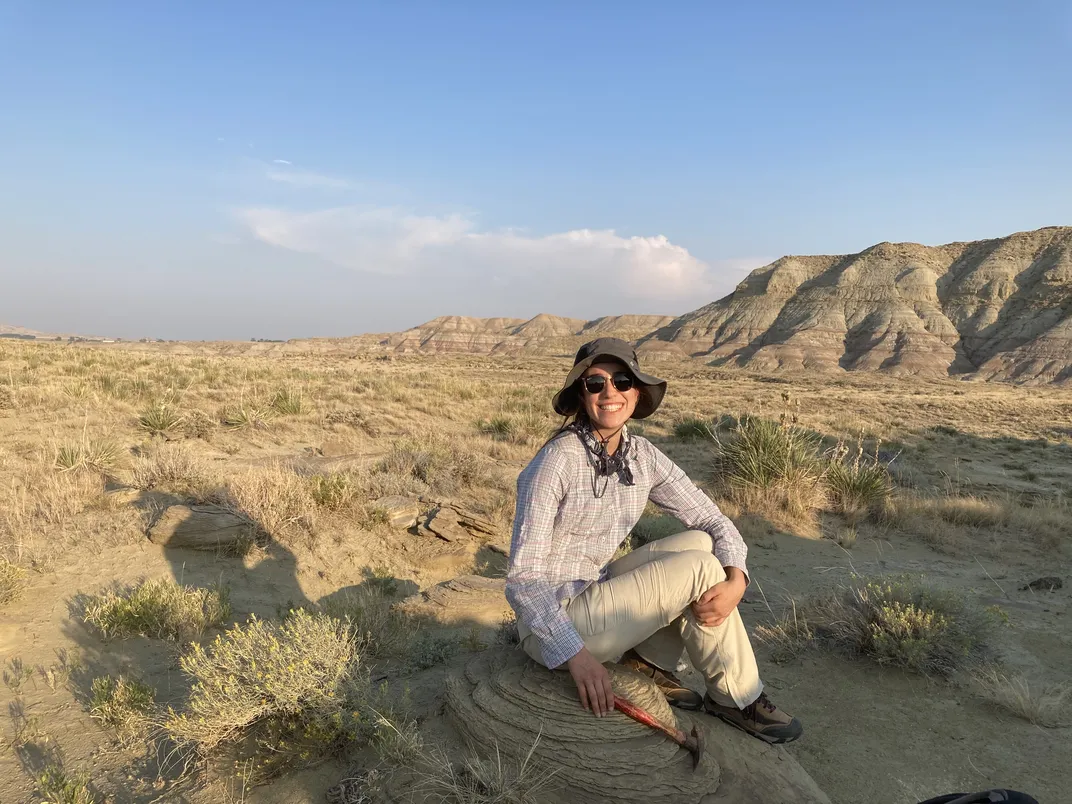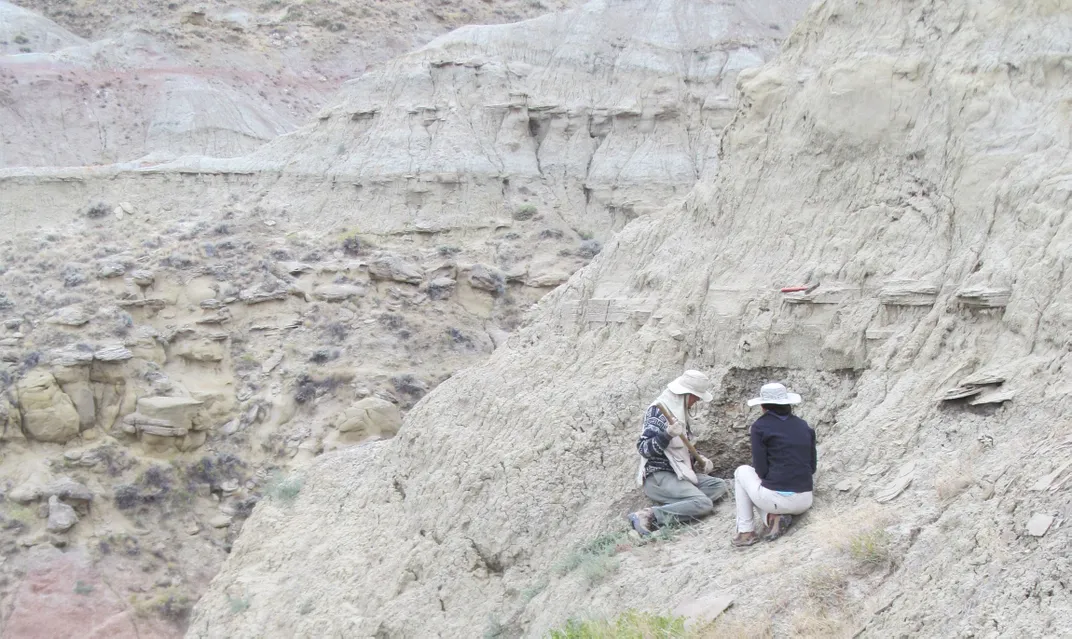OFFICE OF ACADEMIC APPOINTMENTS AND INTERNSHIPS
Tiny Fossils, Big Insight; How We Can Use Fossil Pollen to Understand Earth’s Climate History
As a palynologist, I study microscopic fossil spores and pollen that were produced by plants for reproduction. Pollen is highly important to the future of every plant and is made of an incredibly resilient substance (sporopollenin) ensuring that pollen can be preserved in rocks for hundreds of millions of years.

The natural world has always fascinated me, starting with the days of my youth exploring the bushland surrounding my childhood home, collecting flowers and rocks and being curious about their growth and formation. My passion for the outdoors continued to develop through time as did my desire to explore the world and its evolution. As a Postdoctoral Research Fellow in the Department of Paleobiology at the National Museum of Natural History (NMNH), I am currently generating data helping us to construct Earth’s dynamic climate history.
As a palynologist, I study microscopic fossil spores and pollen that were produced by plants for reproduction. Pollen is highly important to the future of every plant and is made of an incredibly resilient substance (sporopollenin) ensuring that pollen can be preserved in rocks for hundreds of millions of years.

Fieldwork is required to collect rock samples that contain these tiny fossils. Once returning to the NMNH, rock samples are processed using a variety of chemicals. These chemicals dissolve the rock and isolate the extremely resilient pollen. The pollen is then placed onto glass slides and examined using a high-powered microscope.

Every plant that has ever grown on Earth produces a pollen grain of distinct appearance and under a microscope, it becomes extremely apparent just how diverse pollen grains are. As palynologists, we work together to study and collect pollen from modern trees, carefully examining and documenting their shape and appearance. We can then compare the modern pollen grains to the fossil record. If we observe a pollen grain that resembles a modern pollen grain, even in rocks millions of years old, we can be confident that they were both produced by the same type of plant because plants do not change their pollen types once they have evolved (for example, some pollen types have remained unchanged for over 100 million years).
One of the ways fossil pollen can be used is to help construct an image of ancient ecosystems. In reconstructions, including those in our new David H. Koch Hall of Fossils – Deep Time, the types of plants featured in the exhibit are based on data. For the plants, this data has been produced by palynologists and paleobotanists who study fossil pollen and leaves, helping us travel back through history to determine the types of plants present millions of years ago. Incorporating fossil plants into these reconstructions enables us to understand the entire ecosystem which is particularly important as the natural world is highly integrated.
Throughout my Peter Buck Postdoctoral Research Fellowship, I am using fossil spores and pollen extracted from rocks that my advisor, Dr. Scott Wing, and I collected from Wyoming alongside our paleobotanical collection at the NMNH, to reconstruct the landscape of Wyoming 56 million years ago. I am interested in this time, known as the Paleocene-Eocene Thermal Maximum (PETM), as it is characterized by elevated carbon dioxide, rising sea levels and high temperatures. The rocks I have been extracting pollen from, that formed during the PETM, contain pollen produced by palm trees and legumes that today grow in dry subtropical forests. This suggests that subtropical forests were widespread across Wyoming 56 million years ago, starkly different to the environment today. Fossils therefore allow us to travel back through history to uncover how the Earth has evolved in different places. By exploring Earth’s past, we can also understand today’s human-driven climate change and learn how our choices—as individuals and a society—shape our future.


